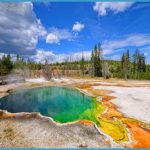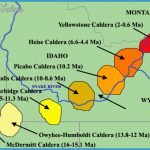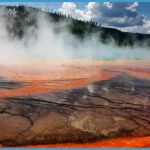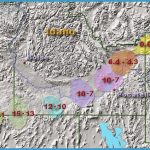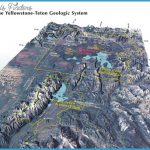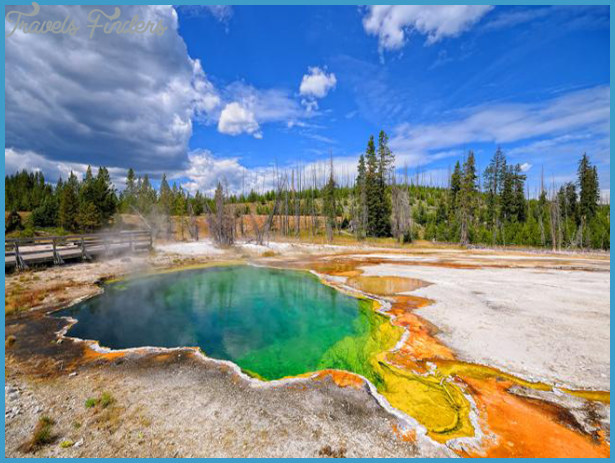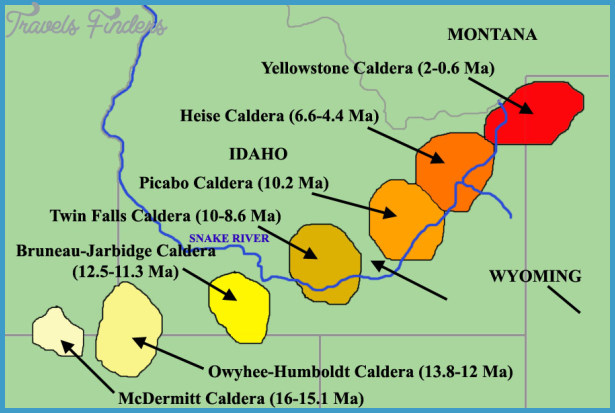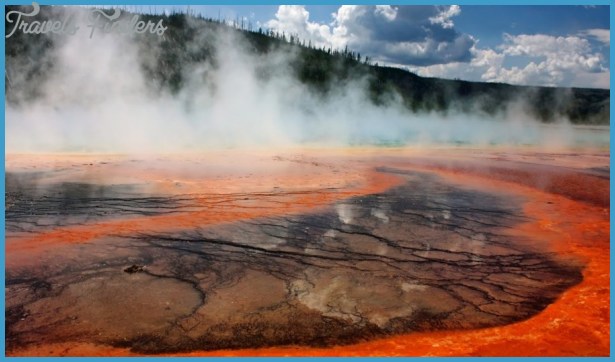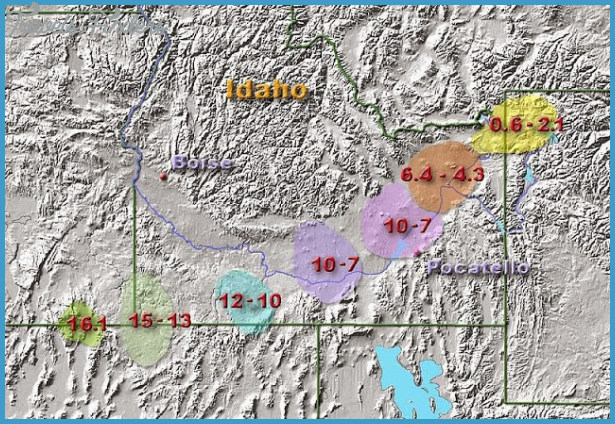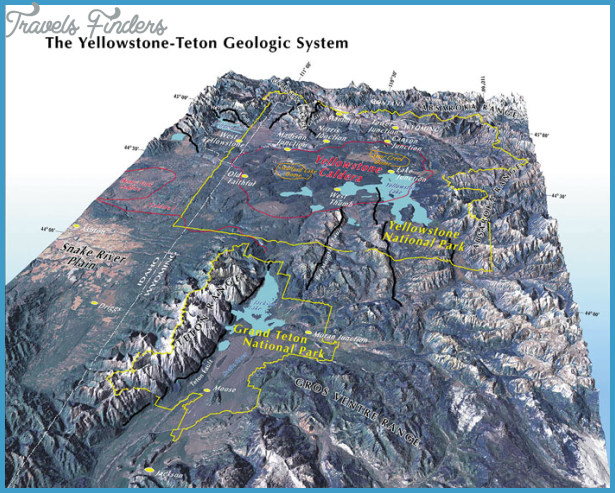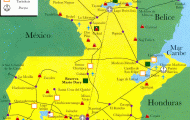Plumes have been thought to come from the top of the earth’s metallic core, 1700 miles (2700 km) below the earth’s surface, and to rise to the surface of the earth. Some geologists have recently questioned the idea that such a giant plume created Yellowstone, with all its extraordinary volcanic features. There are two reasons for this recent questioning. The first is that geophysi A 1.2-million-year-old basalt lava flow near Calcite Springs extends across the middle of the photo. Vertical lines in the flow are the columns of basalt formed when the lava cooled and shrank. cists have refined the seismological techniques they use to see if they can detect a plume rising. Their results are not quite what was predicted. Geophysicists know that seismic (earthquake) waves travel through the earth faster if the rocks are cooler, and slower if the rocks are warmer or even molten. Seismic waves passing under Yellowstone should slow down in the hot zones and not outside those zones. Recent measurements show extra-hot rocks below Yellowstone, but only in the uppermost 300 miles (500 km), not the full 1700 miles. In some other hot spots, such as the Azores Islands and Tahiti, hot rocks can be traced down the full distance. The second reason for questioning the existence of a giant plume under Yellowstone comes from geographic evidence.
A series of copious volcanic eruptions started in north central Nevada 17 million years ago and left a trail northeastwards across Idaho to the present Yellowstone location. This track is consistent with the notion of the North American plate moving southwestwards and recording the hot spot as it went. There is another track of large amounts of lava that poured out, mostly in eastern Oregon. However, this track progressed from southeast to northwest contemporaneously with the Yellowstone track. This is the Newberry volcanic chain. This direction contradicts the northeasterly trend of the Yellowstone track. The North American plate cannot have been traveling in two very different directions at the same time. Starting in about 2001, some geologists have suggested that we modify the Yellowstone plume idea. Take a look at the cross section of the earth in Figure 5 ( 303). As the Juan de Fuca Plate (B) sinks down, it may drag along enough overlying rocks (purple in the diagram) to start a circular convective motion (counterclockwise in the purple triangle in the diagram). This would bring very hot rocks up and possibly produce magmas that are the Newberry volcanic chain. This interesting conjecture partly explains what is observed. We haven’t heard the last of this problem, however, so let’s wait a few years for more, and perhaps different, observations and measurements.

